|
The first time I heard
about Zeiss Telementor
telescope it was reading an email by my friend Luis Arguelles,
explaining me
how wonderful was that small 63 mm refractor.
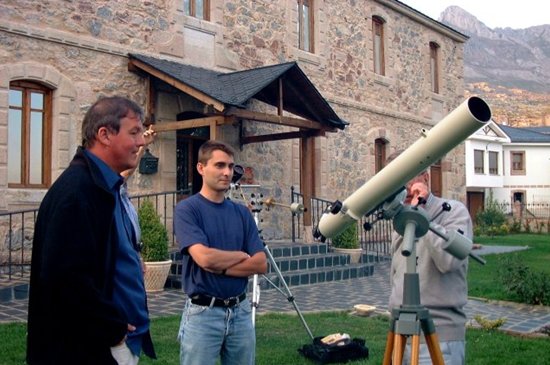
Very strange to fall in
love for a so small
telescopes, especially in an amateur astronomy world were almost
everyone is
running toward bigger and bigger aperture.
But I was able to observe
through the Telementor of my
friend John Ryan in September 2002, and I found out in that lens an
incredible
optical quality.
I was completely
astonished by a 50% phase Venus
without any chromatic aberration, it was like to observe in an APO
telescope … Coming
back home I began to study the way to get such a lens for my observing
needs.My
friend Tito got the same illness, and began immediately to hunt for a
Telementor: within a month, with the help of Luis, we found an amateur
living
near London, selling his old Telementor. After some email to adjust
price and
manage the shipping, the telescope was soon in Tito’s home, with a
complete
happiness of the new Zeiss-owner.

I choose the way of
do-it-yourself, as I knew that the
lens, mounted in cell, was ready to ship
(new) from Baader Planetarium firm in
Germany – sold in Itay by Unitron Italia.
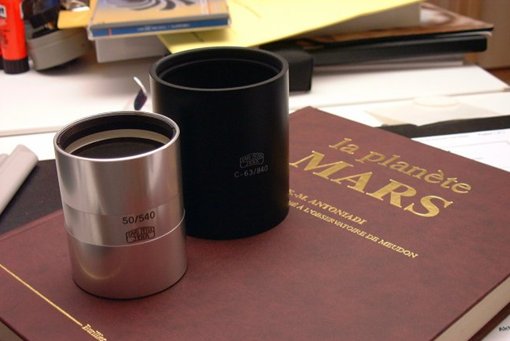
I purchased not only the
C63 doublet (63 mm diameter,
focal length 840 mm) but also the C50 one (50 mm diameter, focal lenght
540
mm). Both achromats were mounted in aluminum tubes, with the right
thickness to
obtain the seat for the cell in front – the cell was hold in place by a
screwed
cap, having also the function of dew-shield.
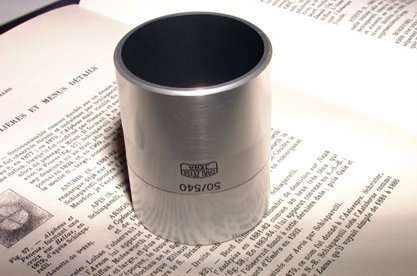
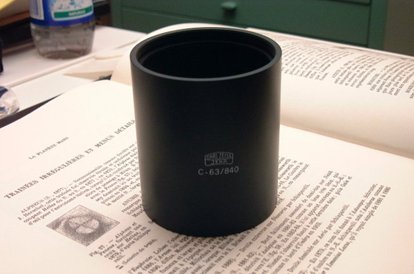
C50 and C63 Zeiss lenses mounted in
cell
The focusers were got by
mail order to Apogee Inc.,
they are not Zeiss or Baader standard of course, but quite good for the
price –
the radial clearance is somehow big, but can be reduced with a slight
tightening of the holding screw.
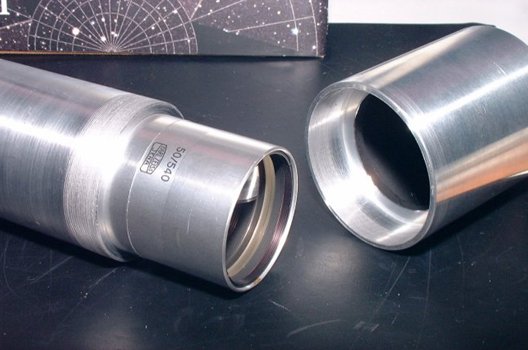
The cell in
its seat
After the first set up,
the telescope were both fitted
with internal diaphragms – at the beginning I had covered the inner
surfaces of
OTAs with black velvet paper, but some
halo around bright objects was not very thrilling to observe …
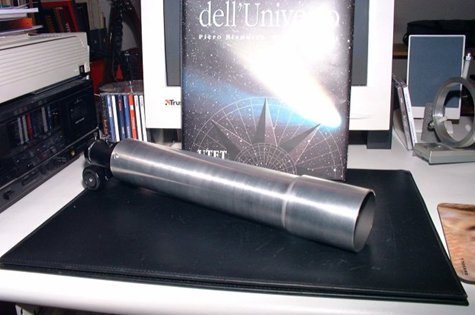
The complete
OTA
I
am going to report carefully the performance of these telescopes in a
dedicated report. Briefly, they have an incredible quality and contrast
and,
especially when observing together with skilled amateurs, they are what
is
called a “conversation stopper”. I should paint the OTAs with white
paint, but
that crude aluminum gives them a so old-fashioned appearance I cannot
find the
time
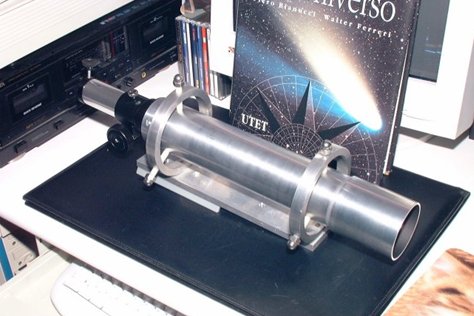
C50 OTA on a
double ring mount
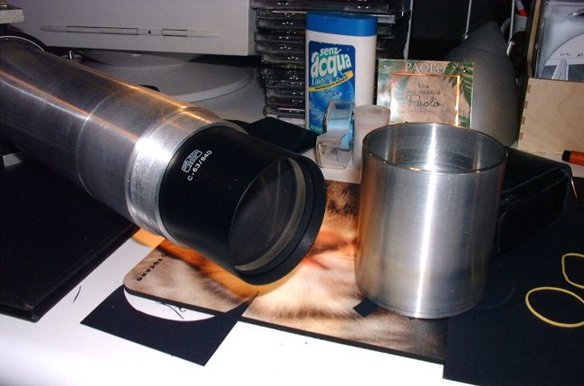 C63
cell half-way in his seat
C63
cell half-way in his seat
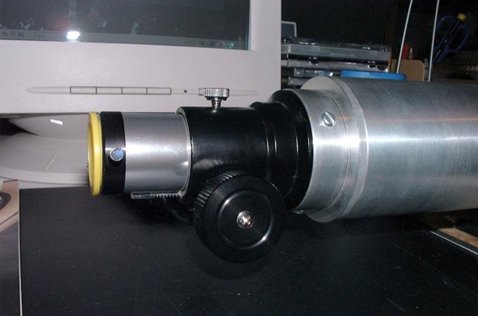 The
focuser fitted in the OTA
The
focuser fitted in the OTA
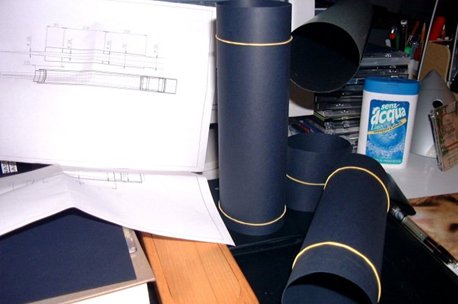
Construction
of diaphragm with black cardboard
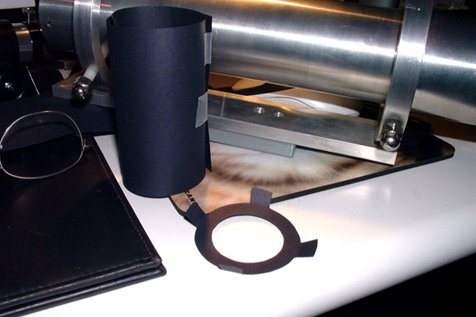 Construction
of diaphragms
Construction
of diaphragms
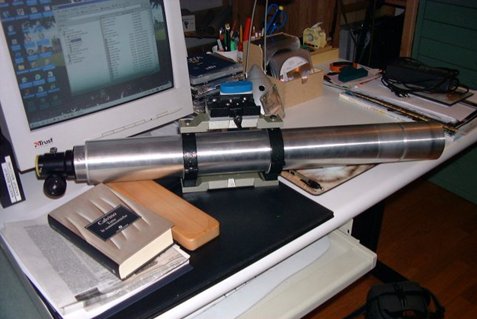
The complete
C63 OTA

C63 OTA on
Vixen GPDX mount
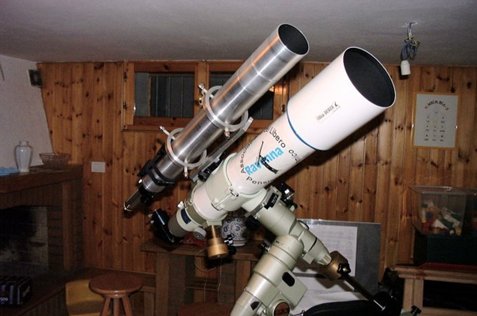
C63 OTA plus
Takahashi FS102 on the GPDX
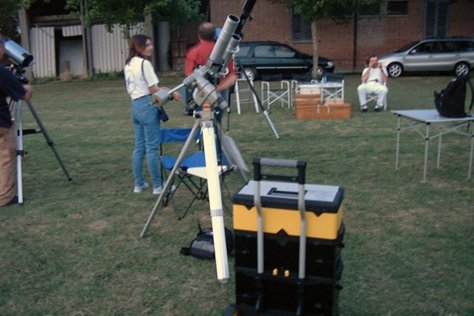
The first
public light of my double Zeiss setup – Spring 2003
Paolo Morini, 2004
|
|